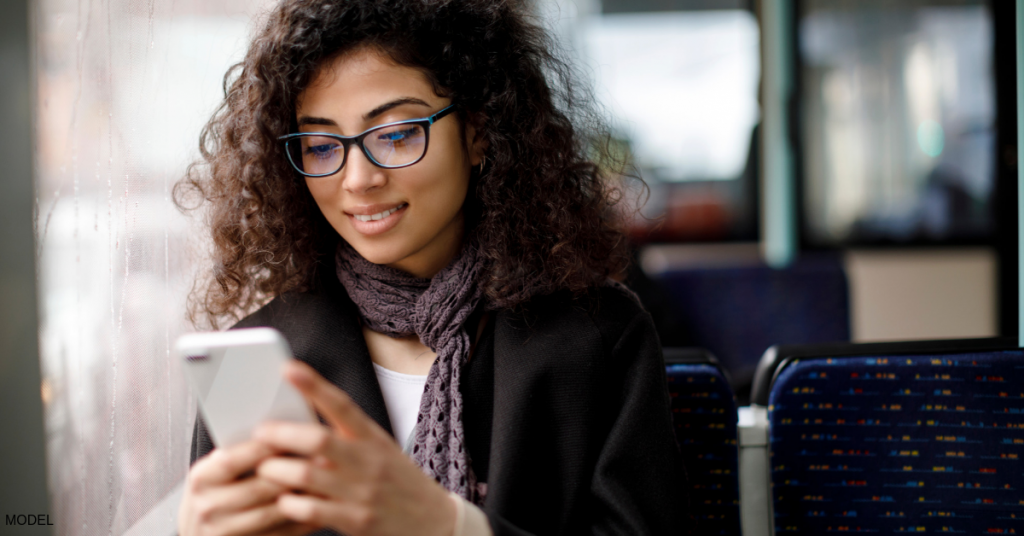Blue light is becoming a growing source of concern for our eye patients. While it may seem harmless, sources of blue light such as smartphones and tablets can cause digital eyestrain which may have serious effects on your eyes. This may lead to issues such as dry eyes and accelerated macular degeneration. Opting for dry eye treatment at our Jeffersonville Dry Eye Center or locations throughout the Kentuckiana region can provide welcome relief, but preventing unnecessary exposure is an important line of defense.
In this blog post, we’ll review what you need to know about blue light, digital eyestrain, and their effects on your eyes—and explain what you can do to avoid negative consequences.
What Is Blue Light?
Light contains a spectrum of various colors, and blue falls on the end with shorter, higher-frequency wavelengths. Light that looks white, such as sunlight, often contains a high concentration of blue, so our eyes are exposed to these wavelengths often. Blue light exposure from screens is much less than the amount of exposure from the sun, however, it is important to take precautions to exposure whenever possible.
As screens become a constant in our lives, our exposure is increasing even more. In addition to sunlight, blue light also comes from computers, TVs, smartphones, tablets, and similar devices, which are often held close to our eyes for extended periods of time. Other sources include fluorescent light, compact fluorescent light bulbs and LED light.
Blue light affects the body’s circadian rhythm, our natural wake and sleep cycle. During the day, blue light wakes us up and stimulates us. But too much blue light exposure late at night from your phone, tablet or computer can make it harder to get to sleep.
How Does it Affect My Eyes?
What are the consequences of prolonged exposure to blue light? While there is no scientific evidence that blue light from digital devices causes damage to your eye, the main concern is digital eyestrain itself. If you’ve experienced headaches, tired eyes, blurred vision, or sensitivity to light after looking at a screen for an extended period of time, you’ve felt the effects firsthand.
In addition to causing temporary discomfort, continued digital eyestrain can lead to premature eye aging, which often takes 2 forms:
- Dry eyes: If you’re like many people who spend much of their day looking at blue screens, you may eventually develop dry, irritated, or sore eyes. This can be treated at our Dry Eye Center, where we may prescribe you medications or procedures to encourage healthy tear production.
- Damaged retinas: Deterioration of retinal cells can result in an early onset of macular degeneration. We treat this with retina procedures including Lucentis® and Avastin® therapy.
How Can I Prevent Damage?
Lessening your exposure to digital devices that emit blue light may be one of your best bets for preventing damage. There are few ways to do this, although these methods aren’t 100% proven to reduce digital eyestrain. Using protective eyewear that filters out blue light, taking advantage of screen filter settings that adjust color composition, and decreasing your screen time, in general, may all be helpful. Some types of intraocular lenses (IOL), placed after cataract surgery, can protect the retina from blue light exposure. If you think you may be experiencing digital eyestrain regularly, we recommend trying these solutions for yourself.
Keeping up with regular primary vision care visits will help us detect early symptoms of eye damage. This way, if you are experiencing harmful effects, we can treat them as soon as possible.
If you’re interested in learning more about digital eye strain solutions, such as dry eye treatment in our Jeffersonville office, or if you have any questions about blue light exposure, please contact us online or call (812) 284-0660 to schedule an appointment.






